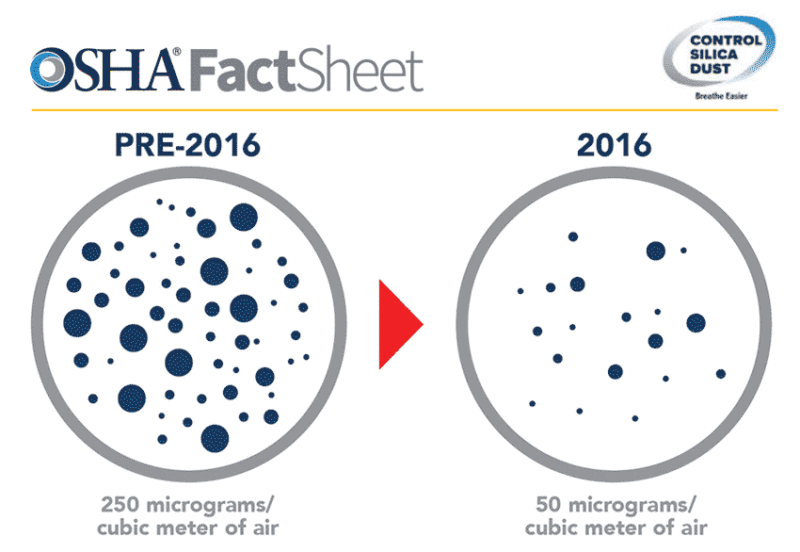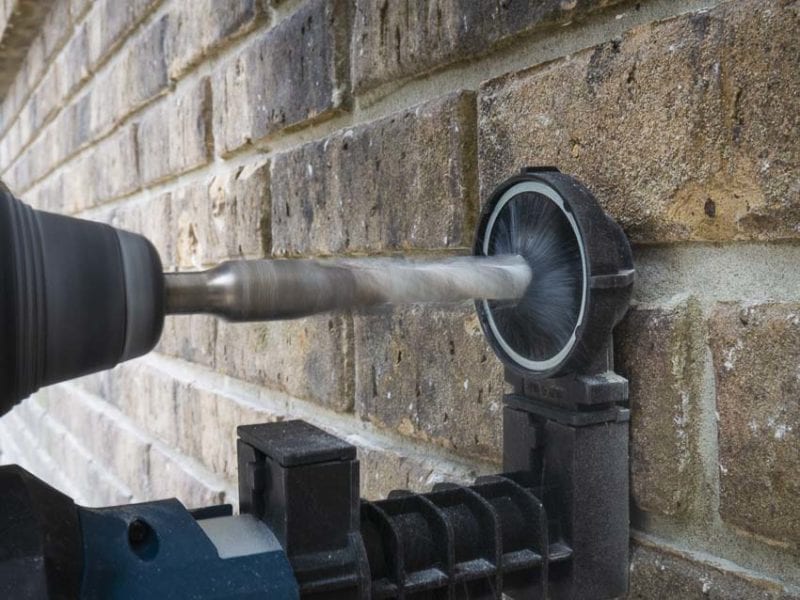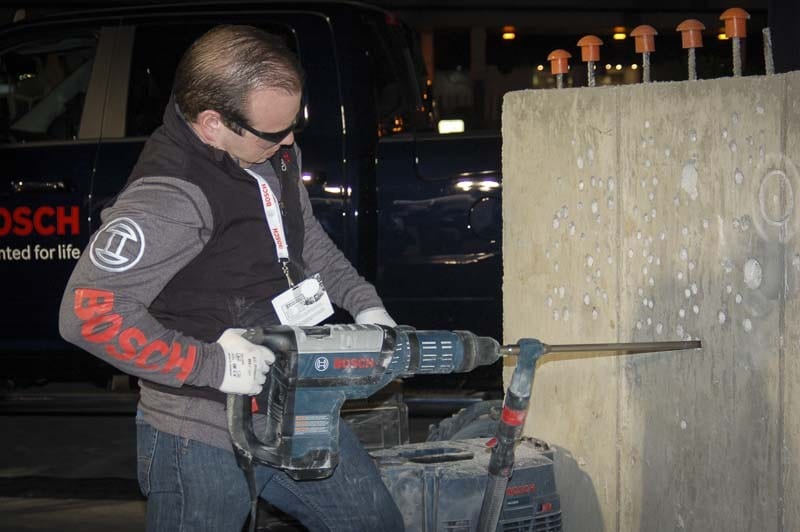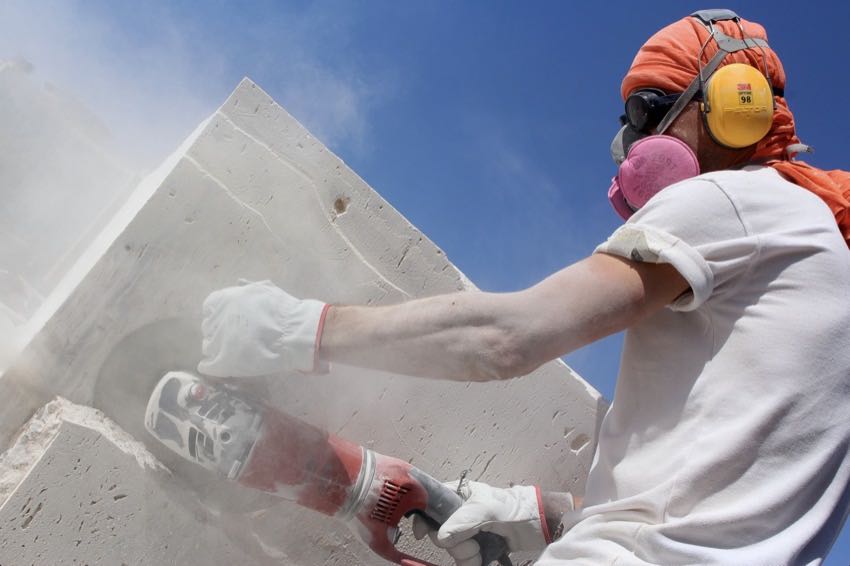The OSHA Silica Dust Permissible Exposure Limit (or PEL) went into effect on September 23, 2017. It gives businesses guidelines regarding permissible exposure limits for silica dust inhalation on a job site. The diminutive nature of those limits may surprise you.
Just because a few years have gone by doesn’t free you from meeting the standard. Is your company in compliance? Do you know how to check?
Table of Contents
The Original 2016 OSHA PEL Reduction
A big change occurred back in 2016 when OSHA updated the respirable crystalline silica Permissible Exposure Limit (PEL). The changes affected the construction, manufacturing, and fracking industries. The PEL had formerly been an average of 250 micrograms per cubic meter of air over an 8-hour shift.
The 2016 OSHA Silica Dust Permissible Exposure Limit reduces that average exposure limit to 50 micrograms per cubic meter. There are at least 1.86 million construction workers exposed to respirable crystalline silica with an estimated one-third exposed to more than 50 micrograms per cubic meter.
What is Silica Dust?
Crystalline quartz, the most common form of silica, is a component of sand, stone, rock, concrete, brick, block, and mortar. One of the oldest known workplace hazards is silica dust inhalation. Chipping, cutting, drilling, and grinding materials that contain crystalline silica release respirable crystalline silica particles into the air. The dust penetrates the lungs, stomach, and bones and results in silicosis and cancer. It’s also hazardous to inhale wood dust.

OSHA Silica Dust Permissible Exposure Limit: Prevention and Control
There are several ways to prevent dust particle inhalation. Protective respirators and dust masks prevent direct inhalation. Don’t eat in areas where the dust could settle and don’t expose food or tobacco products to dust. Be sure to wash your hands and face after dust exposure before eating. It’s also wise to park in areas where dust can’t settle on vehicles.
Equipment can also limit dust exposure. Bosch (who put together the infographics for this article) offers Speed Clean Bits as part of a comprehensive system that reduces dust while producing precise, clean holes in concrete. The system, also includes dust vacuums, dust shrouds, and dust collection attachments. It not only helps you hit those OSHA PEL limits, but it also reduces silica dust in construction zones.

In short, three overarching methods exist to prevent and control silica dust inhalation:
- Wet methods that supply water right where silica dust is made by saws, drills, etc
- Dust extraction or other ventilation that removes silica dust at or near the point of production
- Enclosures that isolate the work process and/or the worker
2020-21 Updates with Respect to Complying with the OSHA PEL for Silica
Employers have needed to be in compliance with all requirements of the OSHA PEL for silica dust standards by June 23, 2018. Upcoming dates and regulations include the following:
- Employers must offer medical surveillance to employees exposed at or above the action level for 30 or more days a year starting on June 23, 2020. (As of June 23, 2018, employers must offer medical surveillance to employees exposed above the PEL for 30 or more days a year)
- Hydraulic fracturing operations in the oil and gas industry must implement dust controls to limit exposures to the new PEL by June 23, 2021.
The Bottom Line
The 2016 OSHA Silica Dust Permissible Exposure Limit (or OSHA PEL) reduces silica dust exposure from 250 to 50 micrograms per cubic meter of air. Expect new tools and accessories, like hollow core drill bits, and preventative measures to continue their expansion on the jobsite.

If OSHA’s silica dust permissible exposure limit affects your industry, please be sure to take the required steps to reduce the chances of crystalline silica dust inhalation. If you’re a Pro, how do you manage dust for you and your crew? Tell us about it in the comments below—or join the conversation on Facebook, Twitter, and Instagram!


